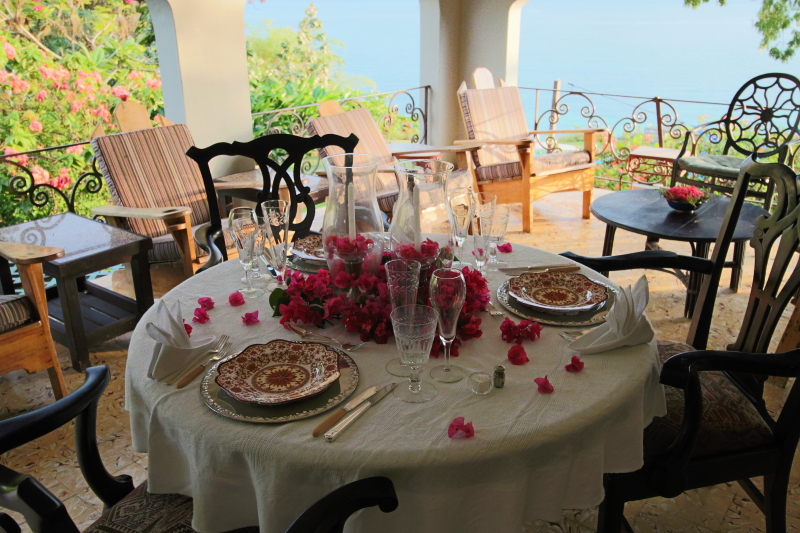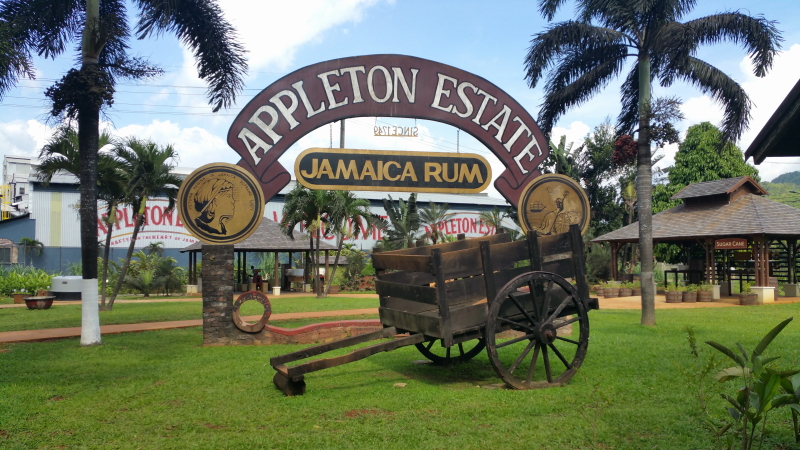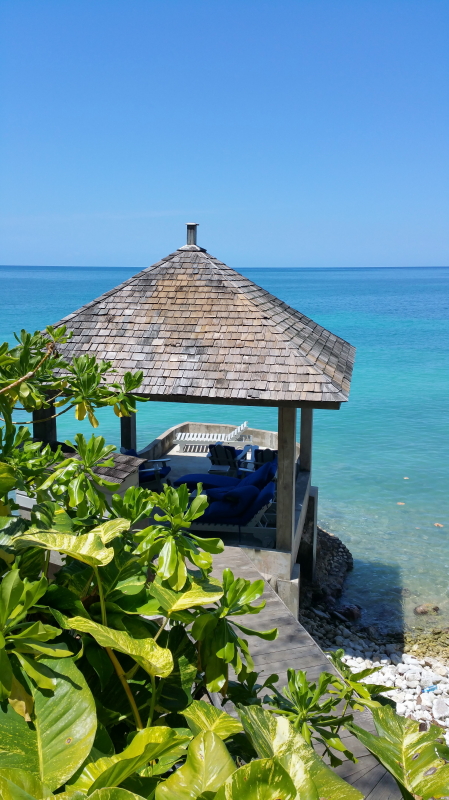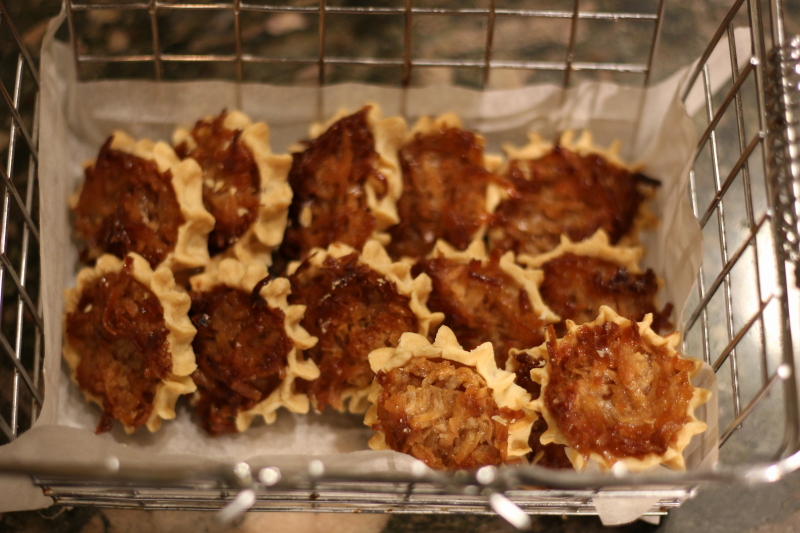When you sit down to dinner in Jamaica, you get an authentic taste of the island—its tropical geography, its varied history, and its contemporary cultural currents. Some of Jamaica’s foods are perfect for the whole family, while others are for mum and dad only. Here is a Jamaican journey through the lens of five foods.

Dinner is soon be served at Bluefields Bay Villas. Photo Adán Cano Cabrera
Ackee
Forget bacon and eggs. In Jamaica, the breakfast of choice is ackee and saltfish, the national dish. Originally from West Africa, ackee most likely made its way to the island on a slave ship in the sixteenth century. But, though this fruit isn’t native to Jamaica, Jamaica has embraced it like no other nation. On my first morning in Jamaica, I enjoyed ackee and saltfish for breakfast at Iberostar Rose Hall. I’d never had ackee before and was surprised to discover that the texture is very much like scrambled eggs.
Rum
Jamaican rum is so good that it’s worth leaving the beach for, so—if you can get away from the kids—be sure to take in a distillery tour. I suggest Appleton Estate, which was established in 1749. It’s the country’s oldest sugar estate and distillery in continuous production, and its current master blender is Joy Spence, the world’s first woman to hold such a position. As soon as you arrive at Appleton, you’ll be directed to the bar where a welcome drink is offered. Get a Stormy Valley, which is this estate’s version of a Dark and Stormy, then take a seat and enjoy the picturesque view of vibrant green mountains through the giant windows. Once the interactive guided tour is underway, you’ll learn about rum production from cane to cup. You’ll be offered more rum samples than you can probably handle and you’ll get to try sticks of sugarcane and freshly squeezed sugarcane juice. The sugarcane at Appleton has a particularly pleasant and complex flavour, and this is one of the key reasons that the estate produces such fine rums.

Among other products, Appleton has a fifty-year-old rum, which is the world’s oldest barrel-aged rum. Photo Adán Cano Cabrera
Jerk
It’s not just for chicken. Jerk fish and pork are also well worth tasting. The meat is marinated, or dry rubbed with a spice mixture starring Scotch bonnet peppers and allspice, known as pimento on the island. The origins of jerk date back to the seventeenth century when the British invaded Jamaica and the Spanish fled, leaving behind their slaves. To avoid being captured by the British, these slaves escaped into the mountains where they mixed with the indigenous people, the Taíno, and took to slow cooking wild hogs using African culinary techniques and native ingredients. The original jerk recipe has shifted over time, and now it seems that each chef has their own unique touch. While all versions my family and I sampled were delicious, our favourite was at Border Jerk; a casual roadside jerk stand in Lucea, Jamaica, which is popular with locals. Festivals—slightly sweet cornmeal dumplings—are a famous side, but according to my taste buds, the thick and homey strips of fried breadfruit are even better.

A perfect spot for a morning cup of coffee at Bluefields Bay Villas. Photo Adán Cano Cabrera
Coffee
Some of the world’s most celebrated coffee is grown in the Blue Mountains of Jamaica. Here are three ways to drink in this aspect of Jamaican culture: (1) Go on Island Route’s biking excursion to the Blue Mountains. You’ll wash down a Jamaican brunch with steaming cups of Blue Mountain coffee. You’ll swim under a waterfall and see coffee plantations hugging the mountainsides. (2) Take in a festival. From March 23-25, 2018, the inaugural Blue Mountain Coffee Festival was celebrated with barista demos, Reggae performances, and more. (3) Get a cup of coffee and park yourself somewhere beautiful with a view of the turquoise water, add sugar and milk, if desired, and sip slowly. I enjoyed my favourite sweet, strong cups while staying at the family-friendly and incomparably beautiful Bluefields Bay Villas.

Gizzada is also known as pinch-me-round because the edges of the crust are pinched. Photo Adán Cano Cabrera
Coconut
Jamaica Night at Beaches Ocho Rios offered my family the opportunity to sample a plethora of Jamaican coconut sweets including coconut drops, a candy that brings together diced coconut, ginger, and brown sugar; gizzada, a tartlet with a spiced coconut filling; grater cake, a sugary kid-favorite in the form of tinted-pink rectangles; and macaroons—my favorite—which are chewy and pleasantly sweet coconut orbs. But in Jamaica coconut is not only served on the sweet side. For a savoury taste, try run down, a fish and vegetable stew which is cooked into a “run down” state, so that its coconut milk base becomes custardy thick. And, of course, no trip to Jamaica is ever complete without at least several servings of the ubiquitous rice and peas, also called Jamaican Coat of Arms. That is, either pigeon peas or kidney beans simmered in coconut milk.



